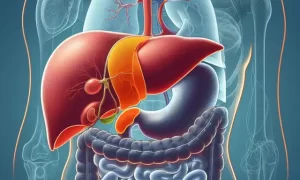Micro-magnetically controlled robot efficiently eliminates stroke-induced cerebral hemorrhage
- Normal Liver Cells Found to Promote Cancer Metastasis to the Liver
- Nearly 80% Complete Remission: Breakthrough in ADC Anti-Tumor Treatment
- Vaccination Against Common Diseases May Prevent Dementia!
- New Alzheimer’s Disease (AD) Diagnosis and Staging Criteria
- Breakthrough in Alzheimer’s Disease: New Nasal Spray Halts Cognitive Decline by Targeting Toxic Protein
- Can the Tap Water at the Paris Olympics be Drunk Directly?
Micro-magnetically controlled robot efficiently eliminates stroke-induced cerebral hemorrhage
- Should China be held legally responsible for the US’s $18 trillion COVID losses?
- CT Radiation Exposure Linked to Blood Cancer in Children and Adolescents
- FDA has mandated a top-level black box warning for all marketed CAR-T therapies
- Can people with high blood pressure eat peanuts?
- What is the difference between dopamine and dobutamine?
- How long can the patient live after heart stent surgery?
Nature Communications: Micro-magnetically controlled robot efficiently eliminates stroke-induced cerebral hemorrhage.
Brain hemorrhage (Brain hemorrhage) is one of the most common and deadly forms of stroke .
More than 2 million people worldwide suffer from cerebral hemorrhage every year, and about 45% of them occur in the ventricle, resulting in intraventricular hemorrhage ( IVH) .
When a blood clot forms by blocking the circulation of cerebrospinal fluid (CSH) , IVH can lead to a more deadly condition called posthemorrhagic hydrocephalus (PHH) , with a mortality rate as high as 50%-80%.
Currently, the gold standard for the treatment of intraventricular hemorrhage (IVH) includes surgery, catheter drainage, and tissue plasminogen activator (t-PA) , which works by dissolving blood clots, but cannot be used in some hemorrhagic strokes treatment, but also has the side effect of causing cerebral hemorrhage.
Catheter drainage is often difficult to remove thrombi effectively and can lead to infection and other complications.
Recently, researchers from Purdue University in the United States published a research paper entitled: Application of magnetically actuated self-clearing catheter for rapid in situ blood clot clearance in hemorrhagic stroke treatment in the journal Nature Communications .
The study developed a magnetically actuated microrobot for the treatment of cerebral hemorrhage .
In a pig model of intraventricular hemorrhage (IVH) , 6 of the 7 pig models treated with the microrobot survived, a survival rate of 86%, compared with the use of conventional catheters The survival rate of the drained 1 pig model was 0%.
Corresponding author Professor Hyowon Lee said that intracerebral hemorrhages caused by stroke are often difficult to treat, and this study represents a real advance in post-stroke treatment and represents a new approach to the treatment of stroke.
In this study, the research team developed a magnetically controlled microrobot that can be remotely activated and manipulated by an external magnetic field, without the need to implant a power source or complex integrated circuits, just by changing the magnetic field, the microrobot can be controlled to move .


Six of the seven pig models treated with the microrobot survived, with a survival rate of 86%, while the one pig model using traditional catheter drainage had a survival rate of 0%.
It is reported that the research team has applied for a patent for the technology and plans to apply to the US Food and Drug Administration (FDA) for the first human study.
Reference:
https://www.nature.com/articles/s41467-022-28101-5
Micro-magnetically controlled robot efficiently eliminates stroke-induced cerebral hemorrhage
(source:internet, reference only)
Disclaimer of medicaltrend.org
Important Note: The information provided is for informational purposes only and should not be considered as medical advice.



